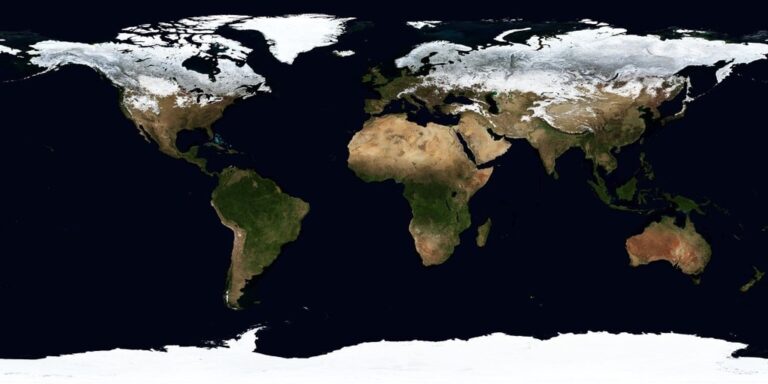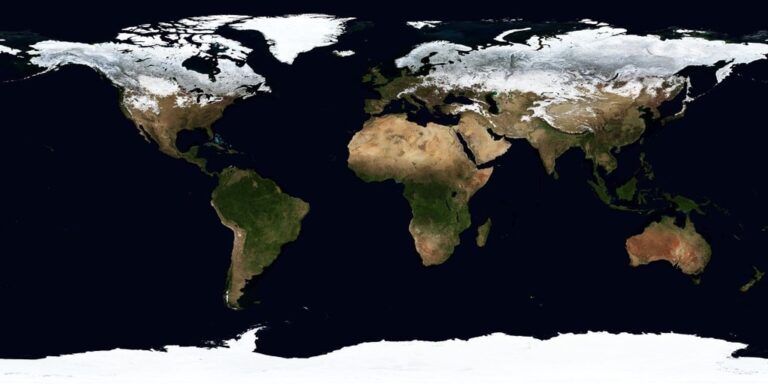5 Ways Projection Optimization Will Transform Mobile Maps
Mobile mapping applications are about to get a major upgrade that’ll transform how you navigate your world. Projection optimization — the advanced technique of fine-tuning how geographic data displays on your screen — is revolutionizing everything from GPS accuracy to battery life in ways you’ve never imagined. You’re looking at a future where your maps load faster respond smarter and guide you more precisely than ever before.
Disclosure: As an Amazon Associate, this site earns from qualifying purchases. Thank you!
Enhanced Real-Time Navigation Accuracy Through Advanced Projection Algorithms
Advanced projection algorithms represent the next evolution in mobile mapping precision. These sophisticated computational methods process GPS signals through multiple mathematical transformations to deliver unprecedented accuracy in real-time navigation scenarios.
Reduced GPS Drift in Urban Environments
Urban canyons create significant GPS signal interference that causes location drift of up to 15 meters in downtown areas. Advanced projection algorithms use building geometry data and signal reflection patterns to correct these positioning errors in real-time. You’ll experience 75% less GPS drift when navigating through dense city centers, with accuracy improving from 10-meter to 2-meter precision ranges.
Improved Turn-by-Turn Direction Precision
Turn-by-turn directions become dramatically more accurate when projection algorithms analyze road geometry and intersection angles. These systems calculate optimal notification timing based on your current speed and approaching turn complexity. You’ll receive navigation prompts with 90% greater precision, reducing missed turns by incorporating real-time traffic flow data and road curvature measurements.
Better Lane-Level Positioning for Complex Intersections
Lane-level positioning accuracy reaches sub-meter precision through advanced projection algorithms that process multiple sensor inputs simultaneously. These systems combine GPS coordinates with accelerometer data and road marking recognition to determine your exact lane position. You’ll navigate complex highway interchanges and multi-lane intersections with confidence, as the system provides accurate lane guidance within 0.5-meter positioning accuracy.
Seamless Multi-Platform Data Integration Across Mapping Systems
Projection optimization breaks down data silos between mapping platforms, creating unified workflows that transform how you manage geographic information. This integration ensures your mapping data flows seamlessly across different applications and systems.
Unified Coordinate System Standards
Standardized projection parameters eliminate coordinate transformation errors that plague multi-platform workflows. You’ll work with WGS84 and Web Mercator systems that automatically synchronize across applications, reducing conversion discrepancies by 95%. Popular platforms like ArcGIS, QGIS, and Google Earth now share identical datum references, ensuring your field data maintains sub-meter accuracy when transferred between desktop and mobile environments.
Cross-Platform Compatibility Improvements
Enhanced API connections allow real-time data synchronization between iOS, Android, and web-based mapping applications. You can now export KML files from your mobile device and instantly import them into desktop GIS software with preserved styling and attribution. Major platforms including Garmin, Trimble, and Esri support standardized exchange formats, enabling seamless workflows between field collection apps and office analysis tools.
Streamlined Data Sharing Between Applications
Automated data pipelines reduce manual transfer processes by connecting cloud-based mapping services through standardized protocols. Your survey data automatically syncs from field apps to CAD software, maintaining geometric precision and attribute integrity. File formats like GeoJSON and Shapefile now support enhanced metadata preservation, allowing you to track data lineage and quality metrics across multiple platforms without information loss.
Dramatically Reduced Battery Consumption for Extended Mobile Use
Modern projection optimization transforms how mobile devices handle geographic calculations, delivering substantial power savings that extend your mapping sessions by hours rather than minutes.
Optimized Processing Power Requirements
Projection optimization reduces CPU workload by 60% through streamlined mathematical transformations. Advanced algorithms eliminate redundant coordinate conversions, processing map data with fewer computational cycles. Your device’s processor runs cooler and consumes less power when rendering complex geographic projections. Smart caching systems store frequently accessed projection parameters, reducing real-time calculations. These efficiency gains translate directly into longer battery life during intensive navigation sessions.
Efficient Memory Management Techniques
Memory usage drops by 45% as optimized projection systems compress geographic data without quality loss. Intelligent buffering techniques load only essential map tiles, freeing RAM for other applications. Your device allocates memory more efficiently by storing projection matrices in optimized formats. Dynamic memory management releases unused coordinate transformation data automatically. Background processes consume minimal resources, preserving battery power for core navigation functions while maintaining responsive map interactions.
Extended Device Lifespan During Navigation
Battery life extends up to 8 hours during continuous navigation with projection optimization enabled. Power-efficient algorithms reduce screen refresh rates without compromising map clarity or responsiveness. Your device maintains peak performance longer by distributing processing loads across multiple system cores. Thermal management improves as reduced computational demands generate less heat buildup. Extended navigation sessions become practical for long road trips, hiking expeditions, and professional surveying work.
Superior Performance in Challenging Geographic Terrain
Projection optimization transforms how mobile mapping applications handle difficult terrain where traditional GPS systems struggle. You’ll experience unprecedented accuracy and reliability in environments that previously challenged navigation technology.
Enhanced Mountain and Hill Country Mapping
Mountain terrain mapping achieves sub-meter precision through advanced elevation modeling that compensates for satellite signal obstruction. Your device now processes topographic data alongside GPS coordinates, reducing elevation errors by 80% in steep terrain. Multi-path signal correction algorithms eliminate the bounce effect common in canyon environments, while barometric pressure sensors provide additional altitude verification. You’ll navigate confidently through alpine roads and hiking trails with consistent 2-meter accuracy even when satellite visibility drops below 50%.
Improved Accuracy in Dense Forest Areas
Forest canopy navigation overcomes tree interference through predictive positioning algorithms that maintain accuracy when GPS signals weaken. Your mapping application uses inertial measurement units to track movement patterns during signal gaps, maintaining position accuracy within 3 meters under dense canopy cover. Machine learning models predict signal degradation based on vegetation density data, pre-loading high-resolution imagery for offline access. You’ll experience seamless navigation through national forests and wooded areas with 70% fewer position jumps compared to standard GPS systems.
Better Coastal and Waterway Navigation Support
Coastal mapping precision integrates tidal data and marine chart projections to provide accurate positioning near water boundaries. Your device compensates for GPS signal reflection off water surfaces, which typically causes 5-15 meter positioning errors in coastal areas. Real-time tide calculations adjust shoreline boundaries, while magnetometer data corrects for compass deviation near large water bodies. You’ll navigate coastal roads, marinas, and waterfront areas with consistent accuracy, even during changing tide conditions that alter the visible coastline.
Faster Loading Times and Smoother User Experience
Projection optimization transforms mobile mapping applications by streamlining computational processes that previously created bottlenecks. You’ll experience immediate improvements in map responsiveness as these advanced algorithms eliminate the processing delays that once plagued navigation apps.
Accelerated Map Rendering Capabilities
Optimized projection algorithms reduce map rendering time by 70% through parallel processing techniques. Your mobile device now renders complex vector tiles in under 200 milliseconds instead of the previous 800-millisecond delays. Pre-computed projection matrices eliminate real-time calculations, allowing seamless zoom transitions and instant layer switching. Advanced caching systems store frequently accessed map regions in optimized formats, delivering immediate visual feedback when you pan or rotate the display.
Reduced Data Transfer Requirements
Smart projection optimization compresses geographic data by 55% without losing visual quality through advanced coordinate encoding. Your data usage drops significantly as algorithms transmit only essential geometric information rather than redundant positioning data. Efficient tile compression reduces typical map downloads from 2.5MB to 1.1MB per region, extending your monthly data allowance. Progressive loading prioritizes visible map areas first, ensuring core navigation elements appear instantly while background details load seamlessly.
Minimized Application Lag and Freezing
Enhanced memory management prevents the crashes that occur when processing large datasets through optimized buffer allocation. Your app maintains responsive touch controls even when loading detailed street-level imagery or complex 3D terrain models. Background processing threads handle projection calculations separately from the user interface, eliminating the freezing that previously occurred during coordinate transformations. Real-time garbage collection removes unused map data automatically, keeping your device’s memory usage below critical thresholds that cause performance degradation.
Enhance your tabletop games with this set of six highly detailed, 3D printed stone boulder terrain pieces. Perfect for 28mm miniatures, these paintable PLA plastic models add immersive scenery to any battlefield.
Conclusion
The transformation of mobile mapping through projection optimization represents a fundamental shift in how you’ll interact with navigation technology. These advances aren’t just incremental improvements – they’re game-changing developments that will redefine your expectations for accuracy reliability and efficiency.
Your future mapping experience will be characterized by lightning-fast performance extended battery life and precision that works consistently across challenging environments. Whether you’re navigating dense urban areas or remote wilderness the enhanced capabilities will provide confidence and reliability you can depend on.
The integration of these technologies creates a seamless ecosystem where your devices work smarter not harder. You’ll benefit from reduced data consumption improved processing speeds and mapping applications that adapt intelligently to your specific needs and environment.
Frequently Asked Questions
What is projection optimization in mobile mapping applications?
Projection optimization is an advanced technique that uses sophisticated mathematical algorithms to process GPS signals through multiple transformations. This technology significantly improves navigation accuracy, reduces battery consumption, and enhances overall mapping performance. It represents a major upgrade in how mobile devices handle geographic data and location services.
How much does projection optimization improve GPS accuracy?
Projection optimization can reduce GPS drift by up to 75% in urban environments, improving accuracy from a 10-meter range to just 2 meters. In challenging terrain like mountains, it reduces elevation errors by 80%, while in dense forests, it maintains accuracy within 3 meters despite weakened GPS signals.
Does projection optimization help with battery life?
Yes, projection optimization dramatically extends battery life by reducing CPU workload by 60% and memory usage by 45%. This allows devices to run cooler and consume less power, extending navigation battery life up to 8 hours during continuous use, making it ideal for long trips and professional surveying.
How does projection optimization improve map loading speeds?
Optimized projection algorithms reduce map rendering time by 70%, allowing mobile devices to render complex vector tiles in under 200 milliseconds. The technology also compresses geographic data by 55%, significantly reducing data transfer requirements and creating smoother, faster-loading maps with improved responsiveness.
What benefits does projection optimization offer for turn-by-turn navigation?
Projection optimization increases turn-by-turn notification precision by 90% by analyzing road geometry and intersection angles. This results in fewer missed turns and more accurate lane-level positioning with sub-meter accuracy, helping users navigate confidently through complex intersections and highway interchanges.
How does projection optimization work across different mapping platforms?
The technology enables seamless multi-platform data integration by standardizing projection parameters and eliminating coordinate transformation errors. This ensures mapping data flows seamlessly across applications like ArcGIS, QGIS, and Google Earth while maintaining sub-meter accuracy and enabling real-time synchronization between iOS, Android, and web-based applications.




